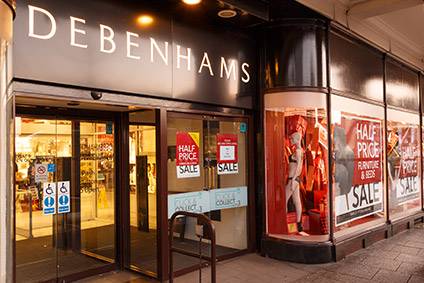The demise of Debenhams was inevitable after its underinvestment, lacklustre ranges and uninspiring stores caused it to lose relevance among consumers in recent years – but the news of its collapse has still come as a huge blow to the retail industry.
While Frasers Group is in talks about a potential rescue bid, some, if not all, of Debenhams’ stores are still expected to be shuttered. Therefore, players like M&S and Next can look forward to a potential transfer of spend, but this cannot be taken for granted and they must focus on the comfort and price of their ranges to successfully attract the department store’s shoppers.
Debenhams’ uncompelling product offer has been one of its main downfalls. Despite relaunching its in-house brands like J by Jasper Conran and Red Herring in 2019, its products continued to feel outdated and indistinct – so its competitors must ensure that their own ranges are inspiring and refreshing enough to benefit from its closures.
Debenhams’ stores have also lacked destination appeal, requiring significant modernisation, meaning that it has struggled to keep up with department store competitors like John Lewis and Selfridges, as well as clothing specialists like Primark, that have been introducing exciting experiential elements into stores. Many consumers have also started to prefer shopping online at retailers like Amazon when desiring a one stop shop, with enforced store closures during the Covid-19 pandemic accelerating this and drastically denting physical sales.
Source: Data is derived from GlobalData’s How Britain Shops survey of 10,000 respondents conducted in April 2020. Consumers were asked which retailers they had purchased clothing from in the last 12 months. The chart shows the percentage of Debenhams shoppers that had also purchased clothing at each retailer.
Debenhams’ core customers are aged 45+, with 18.4% of UK shoppers in this age group purchasing clothing from the retailer in the 12 months to April 2020. Since M&S has a similar customer profile, it has the most opportunity to benefit from Debenhams’ upcoming closures, with 48.4% of Debenhams’ shoppers also shopping for clothing at M&S during the same period. However, M&S may struggle to entice new customers as it has also been suffering from waning appeal, with its non-food sales having declined consistently since 2012.

US Tariffs are shifting - will you react or anticipate?
Don’t let policy changes catch you off guard. Stay proactive with real-time data and expert analysis.
By GlobalDataAs 33.6% of Debenhams’ shoppers also purchased clothing from Primark, it can also expect to benefit from a transfer of consumer spend, with ongoing investments in its physical stores particularly helping to attract older shoppers who are more dependent on shopping via this channel.
Primark’s position as a value retailer will also increase its appeal, as 55.8%* of UK clothing shoppers over 45 stated that price was highly important to them when buying clothing in April 2020, and since then it will have become an even more dominant factor in purchasing decisions, due to consumers’ rising economic uncertainty throughout the pandemic. Debenhams’ closures will also be advantageous for Next, with its extensive selection of third-party brands and superior digital proposition aiding it in enticing Debenhams’ online shoppers.
In order to attract Debenhams’ former shoppers, retailers must focus on comfort when developing their ranges, with 66.1%* of UK clothing shoppers aged 45+ citing this as being highly important to them when making clothing purchases for themselves. More extensive casualwear ranges should be offered to cater towards consumers’ altered lifestyles more effectively, incorporating softer, breathable fabrics and elasticated waistbands.
The fact that most clothing players have opted to close their fitting rooms during Covid-19 will be off-putting for the 47.8% of shoppers aged 45+ that find fit to be a key purchase consideration. Therefore, retailers should start to invest in technology like AI fit assistants via their websites or virtual mirrors in-store to make product selection simpler, though persuading older shoppers to engage with this technology could be a challenge.
*Data is derived from GlobalData’s 2020 clothing survey of 5,000 shoppers conducted in April 2020.




